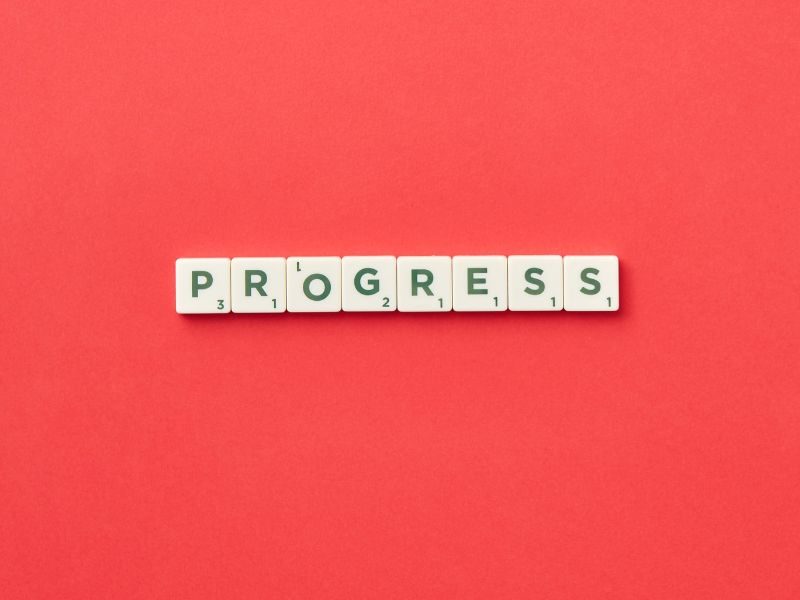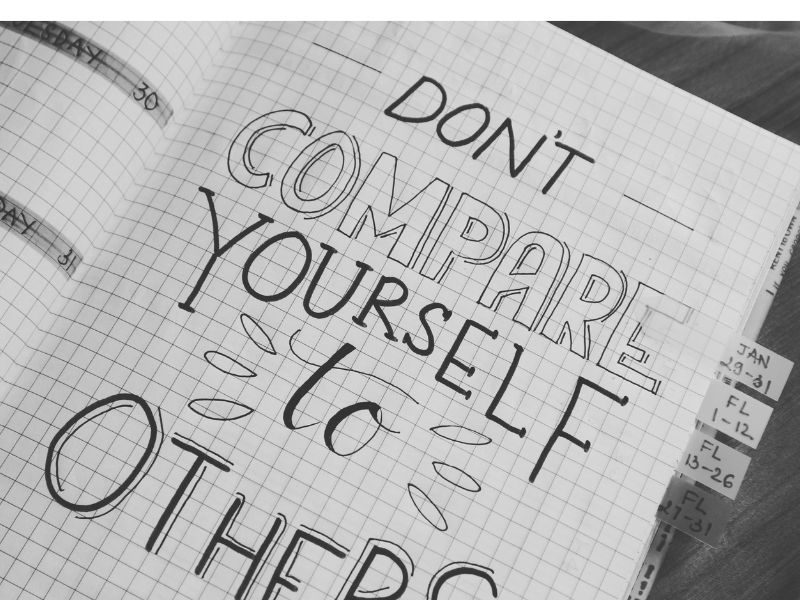Key Takeaways
| Strategy | Key Point |
| Systems Over Goals | Focus on daily processes that create progress, not just outcomes |
| Discipline Beats Motivation | Motivation starts the journey, but discipline carries you through tough days |
| Environment Design | Make good habits easy and bad habits hard through strategic setup |
| Identity Shift | Change who you see yourself as, not just what you do |
| Habit Stacking | Link new behaviors to existing routines for 64% higher success rates |
| Progress Tracking | Regular reviews boost motivation and show accumulated wins |
| Imperfect Consistency | Show up even when conditions aren’t perfect—momentum matters more than perfection |
| Community Support | Surround yourself with people who reinforce your growth mindset |
How to Stay Consistent with Self-Improvement
Consistency is the bridge between good intentions and actual transformation. The problem isn’t that people don’t know what to do—it’s that they can’t stick with doing it long enough to see results. You start strong, hit obstacles, lose momentum, then restart the cycle months later feeling frustrated and defeated. Sound familiar?
The secret isn’t finding more motivation or trying harder. It’s understanding that consistency is a skill you can develop through better systems, smarter environment design, and realistic expectations about how change actually works. Most people fail at self-improvement because they’re fighting against human psychology instead of working with it.
Here’s what most people get wrong: they focus on the end result instead of the daily process. They rely on motivation instead of building discipline. They try to change everything at once instead of making small, sustainable shifts. Real consistency comes from designing your life so that progress happens even when you don’t feel like it.
Build Systems, Not Just Goals
Goals tell you where you want to go; systems get you there. If you want to read more books, your goal might be “read 24 books this year,” but your system is “read for 20 minutes every morning after coffee.” The system is what you control daily, and it’s what creates the outcome you want.
Research shows that people who focus on systems rather than outcomes are more likely to maintain progress long-term. Winners and losers often have the same goals—what separates them is the quality of their daily systems. The person who writes consistently has a writing system; the person who stays fit has a fitness system; the person who keeps learning has a learning system.
Systems work because they shift your focus from future results to present actions. Instead of asking “Am I closer to my goal?” you ask “Did I stick to my system today?” This keeps you engaged with the process and builds confidence through daily wins rather than waiting for some distant achievement.
Your system should be specific enough to eliminate decision fatigue but flexible enough to adapt to real-life circumstances. Instead of “exercise more,” create a system like “after I finish my morning coffee, I do 15 minutes of movement—either a walk outside, yoga in the living room, or bodyweight exercises if it’s raining.”
The beauty of systems thinking is that it makes success inevitable rather than accidental. Each day you follow your system, you’re making progress whether you feel motivated or not. You’re not relying on willpower; you’re relying on design.
Track your system consistency, not just your outcomes. Did you follow your reading system today? Your exercise system? Your learning system? These daily inputs are what create the long-term outputs you want. When you can consistently execute your systems, the goals take care of themselves.
Discipline Over Motivation

Motivation gets you started; discipline keeps you going. Motivation is emotional and temporary—it comes and goes based on how you feel, what’s happening in your life, and external circumstances. Discipline is behavioral and buildable—it’s the ability to do what needs to be done regardless of how you feel in the moment.
The most successful people don’t rely on motivation to maintain their habits. They’ve built discipline through repetition, creating automatic responses to specific situations. They go to the gym not because they feel excited about it every day, but because it’s simply what they do on Tuesdays and Thursdays at 6 PM regardless of their mood.
Discipline is like a muscle—it gets stronger with practice. Start small and build gradually. If you’ve never meditated, don’t commit to 30 minutes daily; commit to 2 minutes daily and do it consistently for weeks. The habit of showing up matters more than the intensity of what you do when you show up.
Create non-negotiable minimums for your important habits. On your worst days, when motivation is zero and life is chaotic, what’s the smallest version of your habit you can still do? Maybe it’s reading one page instead of a chapter, doing five push-ups instead of a full workout, or writing one sentence instead of 500 words.
The key insight is that discipline compounds. Each time you follow through when you don’t feel like it, you’re building evidence that you’re the type of person who keeps commitments to themselves. This identity shift is what transforms discipline from something you force yourself to do into something you naturally do.
Remember that discipline doesn’t mean being hard on yourself—it means being consistent with your values. It’s not about punishment; it’s about integrity with your own priorities and vision for your life.
Design Your Environment for Success
Your environment shapes your behavior more than your willpower does. If you want to eat healthier, don’t rely on motivation to resist junk food—remove junk food from your house and stock it with healthy options. If you want to read more, put books in visible places and hide your phone during reading time.
Environmental design works because it reduces friction for good habits and increases friction for bad ones. Make the behaviors you want as easy as possible and the behaviors you want to avoid as difficult as possible. This isn’t cheating—it’s working with human psychology instead of against it.
Look at your physical spaces and ask: What do they encourage? If your workout clothes are buried in a closet but your TV remote is on the coffee table, you’re designing for entertainment, not exercise. If your phone is next to your bed but your journal is in another room, you’re designing for scrolling, not reflection.
Digital environments matter too. Unsubscribe from email lists that distract you from your priorities. Unfollow social media accounts that make you feel worse about yourself. Use apps and tools that support your goals, and delete or hide ones that don’t. Your digital environment should reinforce your values, not undermine them.
Create visual cues for the habits you want to build. Put your guitar in the living room if you want to practice music. Leave a book on your pillow if you want to read before bed. Place your running shoes by the door if you want to exercise in the morning. These cues trigger the behaviors automatically without requiring conscious decision-making.
Design your schedule to support consistency. Block time for your important habits when you have the most energy and fewest distractions. Protect these time blocks like important meetings—because they are important meetings with yourself.
Identity-Based Change
The most sustainable self-improvement comes from changing who you believe you are, not just what you do. Instead of “I want to run a marathon,” think “I am a runner.” Instead of “I want to write a book,” think “I am a writer.” This identity shift makes consistent behavior feel natural rather than forced.
Every action you take is a vote for the type of person you believe yourself to be. When you meditate for five minutes, you’re voting for “I am someone who prioritizes mental health.” When you choose a salad over fries, you’re voting for “I am someone who cares about nutrition.” These votes accumulate into your identity over time.
The beautiful thing about identity-based change is that it creates a positive feedback loop. As you act consistently with your desired identity, that identity becomes more real to you. As the identity becomes more real, the behaviors become easier and more automatic. You stop having to convince yourself to do things; you do them because they’re aligned with who you are.
Start by asking yourself: “What type of person would have the outcomes I want?” If you want to be financially secure, what type of person would that be? Someone who tracks expenses, invests regularly, and makes thoughtful spending decisions. Then ask: “What would that type of person do in this situation?”
Be patient with identity shifts. They happen through accumulated evidence, not single decisions. You don’t become a runner after one jog—you become a runner after consistently showing up to run, regardless of weather, mood, or convenience. The identity follows the behavior pattern, not the other way around.
Use language that reflects your desired identity. Instead of “I’m trying to eat healthy,” say “I eat healthy.” Instead of “I’m trying to be more organized,” say “I’m an organized person.” The words you use to describe yourself influence how you see yourself and how you behave.
Habit Stacking for Compound Consistency
Habit stacking is the practice of linking new habits to existing ones, creating chains of behaviors that reinforce each other. Research shows this approach has a 64% higher success rate than trying to build standalone habits because it leverages existing neural pathways and routine momentum.
The formula is simple: “After I [existing habit], I will [new habit].” For example, “After I pour my morning coffee, I will write three pages in my journal.” The existing habit becomes a natural trigger for the new behavior, eliminating the need to remember or decide when to do it.
Choose anchor habits that are already solid and automatic. Don’t stack new behaviors onto habits you’re still building—this creates a house of cards that falls down when one piece fails. Use habits you’ve been doing consistently for months or years as your foundation.
Make your habit stacks logical and smooth. The connection between habits should feel natural, not forced. Stacking “after I brush my teeth, I will do 50 pushups” might create jarring transitions that reduce consistency. “After I brush my teeth, I will do two minutes of stretching” flows more naturally.
Start with micro-stacks—tiny new habits attached to solid anchors. After you brush your teeth, floss one tooth. After you sit down at your desk, write one sentence. After you get in your car, take three deep breaths. These micro-habits build the neural pathway; you can expand them later once they’re automatic.
You can create longer chains by stacking multiple habits together, but be cautious about making the chain too long initially. If one link breaks, the whole chain can fall apart. Better to have three reliable two-habit stacks than one fragile six-habit chain.
Track Progress, Not Perfection
What gets measured gets managed, but what gets tracked needs to be the right things. Don’t just track outcomes—track the inputs that create those outcomes. If your goal is weight loss, track your system behaviors: did you follow your eating plan, did you move your body, did you get adequate sleep?
Use simple tracking methods that take less than 30 seconds to complete. Complex tracking systems that require detailed data entry usually get abandoned within weeks. A simple checkmark on a calendar, a habit tracker app, or even just photos of completed actions work better than elaborate spreadsheets.
Track consistency percentages, not perfect streaks. If you follow your system 80% of the time over three months, that’s incredible progress, even if you never had a perfect month. Perfectionist tracking creates all-or-nothing thinking that leads to giving up after the first missed day.
Regular review sessions help you see patterns and make adjustments. Weekly or monthly reviews help you identify what’s working, what’s not, and what needs to change. Maybe your morning routine isn’t working because you’re not a morning person. Maybe your evening routine fails because you’re exhausted after work. Use data to optimize, not to judge yourself.
Celebrate small wins consistently. Progress in self-improvement often feels invisible day-to-day but becomes obvious month-to-month. Tracking helps you see this accumulated progress and reinforces the positive behaviors. Each check mark is evidence that you’re becoming the person you want to be.
Share your progress with someone who supports your growth. Accountability doesn’t have to be formal—it can be as simple as texting a friend your daily wins or posting progress updates where people can encourage you. External recognition reinforces internal motivation.
Handle Setbacks and Restart Quickly
Setbacks aren’t failures—they’re part of the process. The difference between people who maintain long-term consistency and those who don’t isn’t that consistent people never fall off track; it’s that they get back on track quickly without drama or self-punishment.
Develop a “minimum viable habit” version of your important behaviors. If you can’t do your full workout, do five minutes. If you can’t write 500 words, write one sentence. If you can’t meditate for 20 minutes, do one minute. The key is maintaining the habit loop even when conditions aren’t perfect.
Use the “two-day rule”—never allow yourself to miss the same habit twice in a row. Missing once is life; missing twice is the beginning of a new pattern. This rule prevents temporary setbacks from becoming permanent backslides while being forgiving enough to handle real-life interruptions.
When you do have setbacks, get curious instead of critical. What caused the break in consistency? Was it external circumstances, lack of energy, competing priorities, or something else? Use setbacks as data to improve your systems rather than evidence that you can’t stick to anything.
Plan for predictable obstacles. If you know work gets crazy in December, design a simplified version of your habits for that period. If you know you struggle with habits when traveling, create travel-specific versions. Consistency doesn’t mean doing the same thing regardless of context—it means maintaining progress regardless of context.
Remember that progress isn’t linear. You’ll have great weeks and terrible weeks, breakthrough moments and plateau periods. The goal isn’t to avoid all setbacks but to become skilled at recovering from them quickly and learning from them effectively.
Build Supportive Community
Surrounding yourself with people who support your growth makes consistency significantly easier. Social influence is powerful—if the people around you prioritize self-improvement, you’re more likely to maintain your own development habits. If they don’t, you’ll constantly swim against the current.
Find or create accountability partnerships with people who have similar goals or values. This doesn’t have to be formal—it can be as simple as regular check-ins with a friend about your progress, sharing wins and challenges, and encouraging each other through difficult periods.
Join communities, online or offline, where self-improvement is normalized and celebrated. This might be fitness groups, book clubs, professional development organizations, or hobby communities focused on skills you want to develop. Being around others who are actively growing creates positive peer pressure and provides models for consistent behavior.
Limit time with people who consistently undermine your efforts or make you feel bad about trying to improve. You don’t have to cut people out of your life, but you can be strategic about when and how you interact with them. Protect your energy and motivation from people who drain them.
Share your journey appropriately. Some people benefit from public accountability; others find it creates pressure that backfires. Experiment with different levels of sharing to find what motivates you without creating stress or comparison issues.
Be generous with support for others’ growth efforts. When you encourage someone else’s consistency, you reinforce your own values and create a reciprocal support system. The person you help today might be the person who encourages you through a difficult period later.
FAQ: How to Stay Consistent with Self-Improvement
How long does it take to build consistent habits?
Research shows habit formation typically takes 2-8 months depending on complexity, with an average of 66 days for simple behaviors. Focus on consistency over speed—showing up regularly matters more than how long the process takes. Complex habits like exercise routines take longer than simple ones like drinking water.
What’s the difference between discipline and willpower?
Willpower is a limited resource that gets depleted throughout the day. Discipline is a skill built through systems, environment design, and consistent practice. Relying on willpower leads to inconsistency; building discipline creates sustainable behavior change that doesn’t depend on how you feel.
How do I stay consistent when motivation disappears?
This is when systems and discipline become crucial. Have predetermined actions you take regardless of motivation: minimum viable versions of your habits, environmental cues that trigger behavior, and support systems that provide external accountability. Motivation starts the process; systems maintain it.
Should I try to change multiple habits at once?
Start with 1-2 keystone habits that positively influence other areas of your life. Once these are automatic (usually 2-3 months), you can add more. Trying to change everything at once usually leads to changing nothing permanently. Focus beats scattered effort.
What if I keep failing at the same habits repeatedly?
This usually indicates a system problem, not a personal failing. Examine your approach: Is the habit too big initially? Is your environment supporting or hindering the behavior? Are you trying to rely on motivation instead of building discipline? Adjust the system, not just your effort level.



